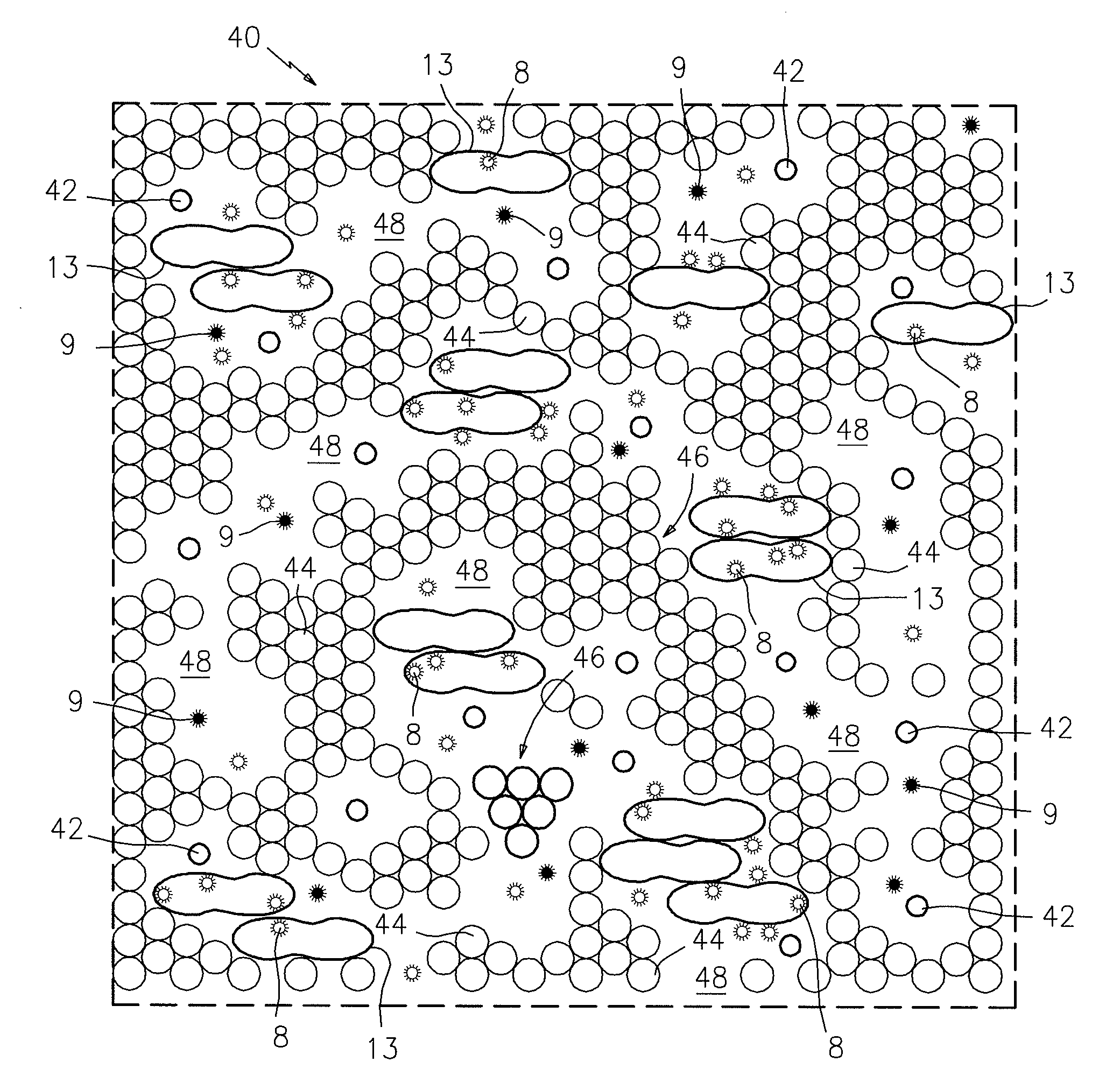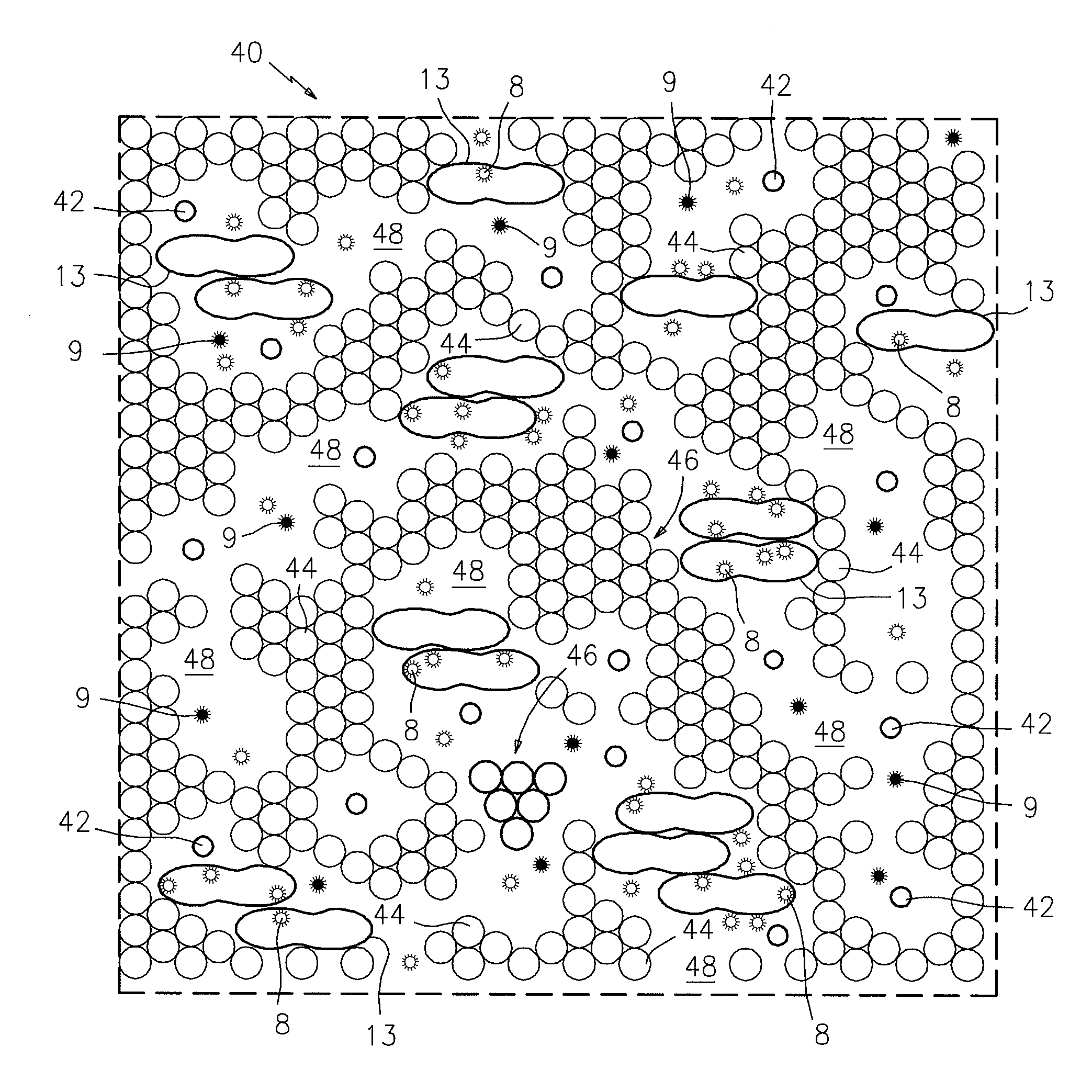Detection of infectious disease in a human or animal by measuring specific phagocytosis in a thin film sample of their anticoagulated blood
a technology of anticoagulation blood and target analyte, which is applied in the direction of instruments, biochemical equipment and processes, material analysis, etc., can solve the problem of inconclusive test results, and achieve the effect of optimal phagocytosis and easy detection
- Summary
- Abstract
- Description
- Claims
- Application Information
AI Technical Summary
Benefits of technology
Problems solved by technology
Method used
Image
Examples
Embodiment Construction
[0011]Referring now to FIG. 1, there is shown in plan view a portion of a sampling chamber 40 which contains a thin monolayer film sample of anticoagulated whole blood that has been incubated with the detection particles. In this case, the chamber 40 has a transparent upper surface so that the blood sample can be electronically or photometrically imaged. The thin film blood sample is contained in a sampling chamber which is provided with beads 42 that provide the desired thickness of the chamber 40, which in this case is about 6μ. The thin film of blood includes red blood cells 44, red blood cell clumps or rouleaux 46, plasma cell-free lacunae 48, and white blood cells 13. The blood sample also includes two detectable particles 8 and 9. The particles 8 are coated with the antigen or antigens specific to the target Lyme disease analyte, and the particles 9 are not coated with the target analyte-specific antigen(s). The particles 8 and 9 are differentially detectable in the sample whe...
PUM
| Property | Measurement | Unit |
|---|---|---|
| through plane thickness | aaaaa | aaaaa |
| through plane thickness | aaaaa | aaaaa |
| through plane thickness | aaaaa | aaaaa |
Abstract
Description
Claims
Application Information
 Login to View More
Login to View More - R&D
- Intellectual Property
- Life Sciences
- Materials
- Tech Scout
- Unparalleled Data Quality
- Higher Quality Content
- 60% Fewer Hallucinations
Browse by: Latest US Patents, China's latest patents, Technical Efficacy Thesaurus, Application Domain, Technology Topic, Popular Technical Reports.
© 2025 PatSnap. All rights reserved.Legal|Privacy policy|Modern Slavery Act Transparency Statement|Sitemap|About US| Contact US: help@patsnap.com


